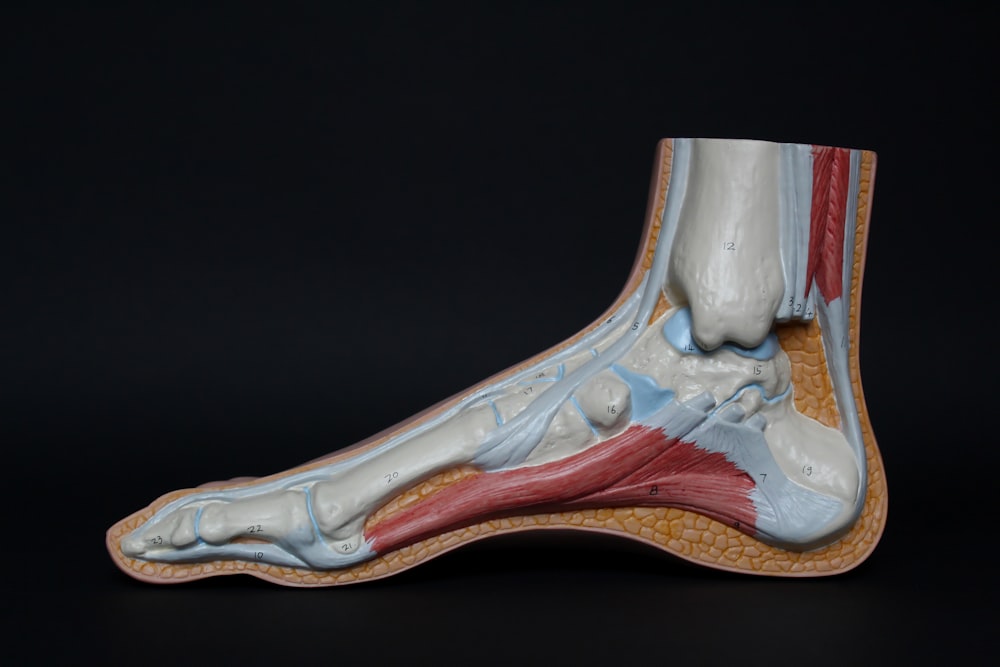
Achilles tendon pain is a type of pain you will always notice, because it will hurt with every step you take. Tendons are fibrous tissues that attach muscles to bones. When a muscle is fired, your tendon transfers the force of your muscle contraction to the bone to allow for movement of the joints.
Although tendons are strong, they aren’t very flexible. Your Achilles tendon can stretch, but only so far, and when someone tries to either force more movement or more movement is forced upon the tendon by slipping, falling or overuse, the tendon may tear or, in extreme cases, rupture completely.
The exact count varies from person to person, but most of us have around 4,000 tendons throughout our bodies, ranging from very small tendons (like the ones that attach to our eyeballs) to large tendons in our arms and legs.
Out of all of our tendons, the Achilles tendon is the largest. It attaches our calf and soleus muscles to the heels of our feet and allows for such movements as jumping, running and walking. Because the Achilles tendon plays such a vital role in our ability to move and walk, it’s important to take care of it and make sure it’s in good shape. This article will go over some common causes of Achilles tendon pain, as well as some treatment methods.
As always, consult with a doctor to properly assess any pain before beginning any kind of treatment regimen. Below are some possible causes for the Achilles tendon pain you are experiencing:
1. Achilles Tendonitis
Achilles tendonitis is an injury to the Achilles tendon often caused by overuse. The tendon becomes inflamed and feels tender to the touch. You may be susceptible to Achilles tendonitis if you’re a frequent runner who has suddenly increased the duration or intensity of your run. For example, if you’re used to running on a flat surface and decide to try trail running or running uphill, Achilles tendon pain could be from the onset of Achilles tendonitis.
Furthermore, ‘weekend athletes’ (those who are mainly sedentary throughout the week but are active on the weekends) may experience Achilles tendonitis after a particularly active weekend.
Symptoms of Achilles tendonitis tend to subside after a period of rest, and by applying ice to the area. You can also take over-the-counter pain medication, which can help manage the Achilles tendon pain. Over time, however, if Achilles tendonitis goes untreated, you run the risk of degeneration of the tendon.

2. Achilles Tendinosis (Microtears)
Achilles tendinosis, also known as tendinopathy, are tiny tears (microtears) and internal degeneration of the tendon causing Achilles tendon pain, soreness, and often stiffness.
Achilles tendinosis results from untreated or chronic tendonitis. It is characterized by degeneration of the Achilles tendon and can also occur as a result of repetitive motion.
Because tendons get a limited blood supply compared to muscles, they tend to take longer to heal. Ignoring pain brought on by Achilles tendonitis delays the healing process, which can lead to tendinosis. That’s why it’s so important to listen to your body. Do not ignore sensations of Achilles tendon pain. Remember that pain is a signal that something isn’t right and should be addressed with a doctor. Ignoring a minor injury now, could result in a major injury later.
3. Tight Achilles (Often Genetic)
As human beings evolved and began walking on two feet instead of four, our heels had to stretch down in order to make contact with the ground. Some people experience no tightness of the Achilles tendon, but others have chronic tightness in their Achilles tendon and calves due to this evolutionary process.
Oftentimes, tight Achilles runs in families.
If it’s in your DNA to have tight Achilles, you may experience Achilles tendon pain frequently, and you may be at a higher risk of Achilles tendon injury.
You can find out your genetic risk of Achilles tendon injury via the results of a DNA test from CircleDNA. Your risk of Achilles tendon injury is one of hundreds of reports about your health from CircleDNA, which uses genetic insights to help you learn more about yourself and your risk factors.
A tight Achilles can impair your ankle’s ability to flex and rotate, limiting the range of motion and can lead to other problems in your feet and ankles.
To fix a tight Achilles, daily stretching is recommended. A podiatrist or a physical therapist can walk you through some stretches to help loosen up the tendon. You can also search ‘Achilles stretches’ on YouTube. You want to both stretch and strengthen your Achilles.
4. Heel Bursitis
Bursae are tiny fluid-filled sacs next to the tendon that provide some lubrication between the surfaces of the joints and allow for ease of movement. Bursitis is the inflammation of the membrane of these sacs and it often accompanies tendonitis.
Like with tendonitis, repetitive or forceful movement of the ankle can cause bursitis. If you experience pain or swelling, regardless of whether or not it is tendonitis or bursitis, it’s a good idea to rest, apply ice and wait for the pain to subside. If pain persists for more than a couple of days, make an appointment with your doctor to discuss further treatment.
5. Inflammatory Arthritis or Gout
Gout tends to occur in cooler regions of the body, meaning appendages that are further from the heart. That’s why the big toe is often affected.
However, gout or inflammatory arthritis can occur in any joint, including the ankle and heel. In fact, the patella and Achilles tendons are commonly affected by gout.
Gout can be treated with a combination of lifestyle changes and medication and symptoms can be managed with painkillers and anti-inflammatories. If you suspect that you may have gout, make an appointment to see your doctor, as if left untreated it can get worse and cause more serious complications.

6. Fibromyalgia
Fibromyalgia is a condition that causes, among many other unpleasant symptoms, chronic pain. Many who suffer from fibromyalgia report foot pain. Pain associated with fibromyalgia stems from inflammation of the fascia, a layer of connective tissue that runs the length of your body. So, it’s possible that the pain you’ve been experiencing at your Achilles heel may have nothing to do with inflammation of the tendon and may have more to do with inflammation of the fascia that runs across the bottom of your foot, a condition known as plantar fasciitis. In fact, some researchers hypothesize that the two conditions may overlap with each other.
7. Rupture of Achilles Tendon
Occasionally, Achilles tendons are torn. Initially, the tears may not cause pain or swelling, but as time passes the tears may become larger, resulting in pain, stiffness, tightness or swelling.
If the tear in the tendon gets too big, then it may rupture. This can happen quite easily if tears are already present. You may hear a ‘pop’ as the tendon may rupture entirely or partially. A rupture of your Achilles tendon is usually extremely painful and requires immediate medical attention.
Repairing a ruptured Achilles tendon requires surgery followed by complete immobilization during the healing process. Afterwards, some rehabilitation may be required to learn how to walk properly again, depending on the severity of the injury and how long the healing process takes.
8. Deep Vein Thrombosis
Although rare, there is a chance of developing deep vein thrombosis after a rupture of the Achilles tendon. The two conditions share some symptoms, such as leg pain and swelling, but if the pain is accompanied by warmth or redness, or any skin discoloration, seek medical attention immediately.
Achilles Tendon Pain: The Bottom Line
Achilles tendons are generally not flexible, and a lack of flexibility can cause injury. However, you can help prevent issues with Achilles tendon pain by properly stretching your Achilles and lower leg on a daily basis.
If you have Achilles tendon pain, your best bet is to try to stick to low-impact exercises such as indoor cycling classes or swimming.
If you’ve had surgery following the rupture of your Achilles tendon, you may not be able to exercise at all for awhile, and it’s important to keep the area very clean and follow the instructions of your surgeon to the letter while recovering. Failure to do so could result in an infection to the surgical site, leading to more pain and complications.
Movement is not meant to be painful. If you’re experiencing chronic or worsening pain in your Achilles tendon when you try to do something as simple as walking, don’t ignore it. While in some cases ice and rest are sufficient to treat the pain, the risks of a more serious complication are too dangerous to ignore.







This Post Has One Comment
Comments are closed.